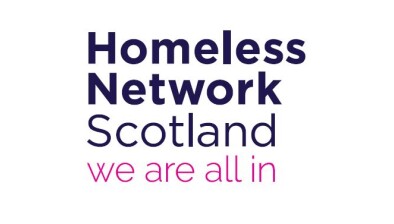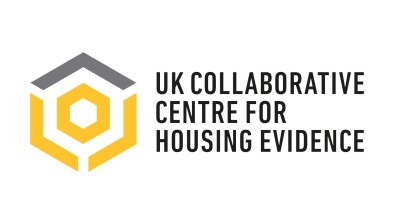Blog: Recommendations for ending rough sleeping in Scotland are nearing completion

The Scottish Government’s Homelessness and Rough Sleeping Action Group is close to making recommendations on ending rough sleeping for good. Read the latest progress from group chair and Crisis chief executive Jon Sparkes.
This week the members of the Scottish Government’s Homelessness and Rough Sleeping Action Group met for the sixth time. Our primary focus was to firm up the recommendations for the second question we’ve been tasked with answering – how do we end rough sleeping in Scotland for good? These proposals need to be completed by the end of February for presentation to the Scottish Government.
We started the meeting with the 50 ideas for proposals that have been worked up to date, each written up on A4 paper and covering most of one wall of the Glasgow Homeless Network conference room! These initial ideas reflect the phenomenal effort members of the group have undertaken, with a very tight deadline to work to, while conducting their day jobs.
Beyond these 12 people, and the Scottish Government team who are central in pulling the work together, the input of professionals across a range of sectors from local authorities to health, justice and so on cannot be underestimated. Nor can the invaluable insights we have gained from the people with experience of rough sleeping. Bringing this intelligence together as well as reviewing the national and international evidence on what works to end rough sleeping, has brought us to a position where we are almost ready to provide a comprehensive set of recommendations to the Minister for Local Government and Housing, Kevin Stewart. But there is still much work to do to make them a coherent and joined-up set of proposals that we think will work.
In previous blogs I’ve outlined the areas we are looking at and detailed our emerging thinking, but as we approach the end date for this specific piece of work it’s worth stating that as a group we appreciate that none of this can be done in isolation from the wider scope of work still to come. With that said, below I have listed a few of the proposals currently being finalised in each area of work in order to provide in-depth recommendations by the end of this month.
Prevention
When we talk about prevention, we are looking at broadly two sets of circumstances. Firstly, predictable homelessness where there is clear evidence that people with particular experiences or circumstances are more likely to experience homelessness, and, secondly, the actions to be taken when someone is at risk of homelessness.
The cornerstone of this approach is early intervention when homelessness can be predicted or prevented. To enable this to happen proposals under consideration include:
These and the other proposals within the prevention strand of work are still to be finalised and linked to other pieces of work external to the Action Group, such as the Care Review. There are also still further questions to be answered on whether recommendations should be made regarding earlier indicators which drive homelessness such as poverty or adverse childhood experiences. As well as the impact of affordability of housing and whether this can have an impact in preventing homelessness, particularly in relation to the roll out of universal credit.
We are also considering how a legal prevention duty similar to that in Wales would help reinforce and support all of these actions to prevent homelessness.
Frontline support
This strand will build on the evidence gathered from the additional measures introduced this winter to enable recommendations on how frontline workers in both statutory services and the voluntary sector can be empowered to prevent homelessness where possible. Recommendations in development include:
These points will continue be refined based on the learning from the additional measures put in for this winter and the collaborative approach that has been enabled between third sector and statutory services. We will also look at the extent to which our work overlaps with work on street begging and addiction – while recognising that not everyone who experiences rough sleeping is engaged in street begging and vice versa.
Housing provision and access
The central premise of this approach is that rapid re-housing to a permanent home becomes the default option wherever possible, but with the understanding that this will take time to implement and not every individual will immediately choose to take on a tenancy, and that in some circumstances people will need high quality and tailored emergency provision while issues of health, mental health or personal security are resolved. Likely recommendations include:
This package of work, even more so than the others, is closely connected to the third question on how temporary accommodation can be transformed and will likely run in tandem to the proposals put forward in that area.
Measurement and monitoring
As I mentioned in my blog last week, following the workshop we ran with stakeholders from across a range of sectors, the need to properly monitor and evaluate the initiatives put in place will be vital in ensuring they are fit-for-purpose and can be appropriately scrutinised. At present we will recommend:
Legislation
Many of the above propositions, if agreeable to the Scottish Government can be implemented without the need for new laws. However in some cases, statutory levers would make embedding the change in system required easier to achieve. For example:
Over the next few weeks we will make the final revisions to these proposals ahead of presenting our final recommendations on rough sleeping to the Government. We know that the Government will scrutinise and test them to determine both their viability and whether they are appropriate avenues to invest in going forward, and decide which proposals they can support.
We will then turn our attention to our other tasks – how to transform the use of temporary accommodation, and how to end homelessness for good.
As ever, if you have any questions at all about the work of the Group, please do not hesitate to get in touch.
This blog was originally posted on the Crisis website.








